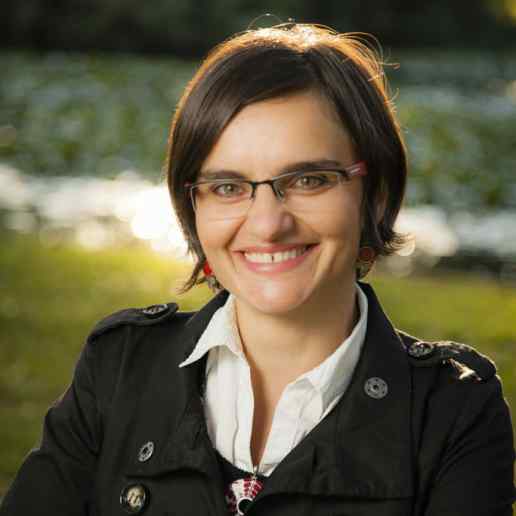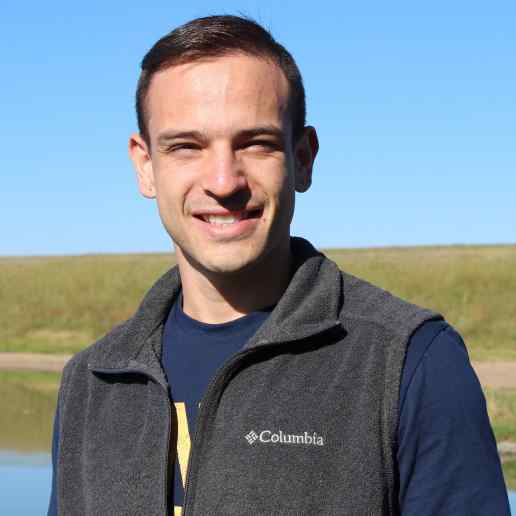Iurii Shendryk
Post-Doctoral Fellow @ CSIRO
Email: iurii.shendryk@unsw.edu.au; iurii.shendryk@gmail.comOffice address:
Room 642, D26 Building UNSW, Kensington 2052
Primary supervisor: Mirela G TulbureJoint supervisor: Mark Broich
Research title: Integration of multi-sensor remote sensing data for assessment of environmental flows in the Barmah-Millewa Forest
Field of Research:
Remote Sensing, GIS, LiDAR, Forestry
Biography:
As a result of his PhD work Yuri got a remote sensing/ machine leanring Post Doc job focusing on precision agriculture at Australia's Commonwealth Scientific and Industrial Research Organisation.
I am a PhD candidate at the University of New South Wales (UNSW) and my intention is to improve the quality of natural environments through my work. On my journey to this goal, I develop high-tech algorithms to process terabytes of satellite data enabling us to make decisions for a sustainable future. My research is focused on the integration of remote sensing, Geographic Information Systems (GIS) and spatial statistics to explore interactions between species, environment and land use, with ongoing research and capacity building work focused on forest health monitoring.
RESEARCH:
CURRENT WORK:
1. In my PhD I and GAEC team explored the potential of air- and space-borne remote sensing in characterizing and monitoring of forest health at multiple scales. We conducted our experiments in the largest river red gum forest in the world, located in the south-east of Australia that has experienced episodes of severe dieback over the past six decades. First, we proposed a new algorithm that utilizes airborne laser scans (ALS) for delineating individual trees with complex shapes, such as eucalypts. Our algorithm was able to accurately delineate up to 68% of trees depending on forest and ALS point density. Second, we investigated the utility of ALS and imaging spectroscopy (IS) in classifying individual tree health and diagnosing potential causes of forest health decline. Our results showed that the health of individual trees can be classified with an overall accuracy of 81% and a kappa score of 0.66, and highlighted that infrequently flooded areas were most susceptible to tree health decline. Finally, we assessed how ALS, Synthetic Aperture Radar (SAR) and multispectral imagery can predict individual tree health on a large scale. My findings demonstrate that individual tree health could be scaled up with substantial level of accuracy (R2 of 0.6). Overall, our results provide a robust and peer-reviewed methodology that utilizes air- and space-borne remote sensing to accurately classify the health of individual trees on multiple scales. A step-be-step video of the methodology developed in my PhD could be found here
2. I used airborne laser scanning (ALS) and imaging spectroscopy (IS) technologies to characterizethe the largest in the world river red gum forest, located in the southeast of Australia. The aim of my research is to quantify health at the individual tree level, which will be further used to dermine the response of this forest to environmental flows. As part of this project I developed a novel algorithm for individual tree crown delineation from ALS based on graph theory. The graphical abstract of the algorithm is presented below.
FORMER WORK:
1. In 2013, I worked on the development of hydrologic monitoring strategy using remote sensing data in contribution to the TERENO-MED network of Global Change observatories at the Helmholtz Centre for Environmental Research (UFZ) in Germany.
2. In 2012, I developed a method for assessing above ground biomass (AGB) of boreal forests in Sweden using a synergy of low point density LiDAR-derived point cloud data and multi-spectral imagery as part of Landscape Greenhouse Gas Exchange (LAGGE) project led by the Department of Earth Sciences, Gothenburg University and the Department of Physical Geography and Ecosystem Science, Lund University. The AGB map for June 2011 over the Skogaryd Research Catchment is presented below.

Scholarships:
- Tuition Fee Scholarship (TFS) scholarship to undertake a PhD research at the University of New South Wales
- Postgraduate Research Student Scholarship (PRSS) to present my PhD research at the 47th Annual American Geophysical Union Fall Meeting, 15-19 December 2014, San-Francisco, USA
- DigitalGlobe Foundation WorldView-2 imagery grant to support my research efforts
- Esri Young Scholars Award 2016 to present my PhD research at the Esri User Conference, 27 June - 01 July, San Diego, USA
Publications:
Published:
- Shendryk, I., M. Broich, M. G. Tulbure, A. McGrath, D. Keith and S. V. Alexandrov (2016). "Mapping individual tree health using full-waveform airborne laser scans and imaging spectroscopy: A case study for a floodplain eucalypt forest." Remote Sensing of Environment 187: 202-217. [Download]
- Shendryk, I., Broich, M., Tulbure, M. G., & Alexandrov, S. V. (2016). Bottom-up delineation of individual trees from full-waveform airborne laser scans in a structurally complex eucalypt forest. Remote Sensing of Environment, 173, 69-83. [Download]
- Boudreault, L.-É., Bechmann, A., Tarvainen, L., Klemedtsson, L., Shendryk. I. and Dellwik, E. (2015). "A LiDAR method of canopy structure retrieval for wind modeling of heterogeneous forests." Agricultural and Forest Meteorology 201(0): 86-97. [Download]
- Shendryk, I., Hellström, M., Klemedtsson, L. and Kljun, N. (2014). "Low-Density LiDAR and Optical Imagery for Biomass Estimation over Boreal Forest in Sweden." Forests 5(5): 992-1010. [Download]
Posters:
- Shendryk, I., Broich, M., Tulbure, M.G. and Alexandrov, S.V. “Mapping tree health using airborne laser scans and hyperspectral imagery”. Poster presentation at the 47th Annual American Geophysical Union Fall Meeting, 15-19 December 2014, San-Francisco, USA.
- Shendryk, I., Merz, R. and Ludwig, R. “Development of hydrologic monitoring strategy: remote sensing approach”. Poster presentation at the 3rd GIONET Summer School 18-27 September 2013, Warsaw, Poland.
- Shendryk, I., Merz, R. and Ludwig, R. “Development of hydrologic monitoring strategy: remote sensing approach”. Poster presentation at the 4th ESA advanced training course in land remote sensing, 01-05 July 2013, Athens, Greece.
Presentations:
- UNSW Science 1 Minute Thesis Competition 2015, 30 July 2015, Sydney, Australia. [View]
- Virtual Poster Showcase at 2015 AGU Fall Meeting, San-Francisco, USA. [View]
- The General Assembly 2016 of the European Geosciences Union (EGU), 17–22 April 2016, Vienna, Austria [View]


